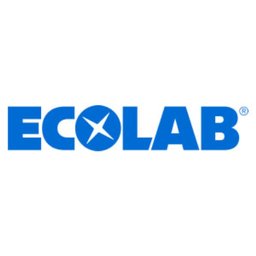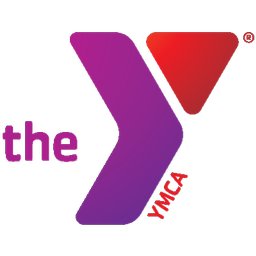Make a difference in Utah's environment and agricultural landscape as an Entry-Level Conservation Project Assistant with the UDAF Conservation department. Under close supervision, you will play a key role in designing and implementing soil and water conservation projects. This position involves working directly with landowners and local cooperators, providing crucial assistance with funding sources and technical expertise to achieve conservation goals. You'll collaborate extensively with the NRCS and a wide network of partners, working with programs like AG VIP, Water Optimization, Pollinator Program, ARDL, Soil Health, ISM, Leray Mcallister, EQIP, and CSP, among others, to successfully implement conservation practices that benefit both the environment and Utah's agricultural producers.
If would like to learn more about working for the Department of Agriculture and Food please
--------------------
- Provides technical assistance to landowners in developing and revising conservation plans.
- Coordinates and/or acts as a liaison between agency or work unit and other agencies, work units, organizations, suppliers, etc. to implement best practices and stewardship measures to improve conservation efficiency, and resource effectiveness.
- Writes and reviews grants, contracts, agreements, or Agriculture Resource Development Loans (ARDL). UDAF Programs you will work with Water Optimization Grants, and Ag VIP
- Coordinates with other agencies, local governments, and interested groups by attending meetings, making presentations, and by providing technical assistance.
- Analyzes, summarizes, and reviews data; reports findings, interprets results and makes recommendations.
- Provides technical assistance at conservation improvement sites.
------------------
- Knowledge of principles and processes for providing customer and personal services. This includes customer needs assessment, meeting quality standards for services, and evaluation of customer satisfaction.
- Knowledge of the structure and content of the English language including the meaning and spelling of words, rules of composition, and grammar.
- Knowledge of plant and animal organisms, their tissues, cells, functions, interdependencies, and interactions with each other and the environment.
- Knowledge of the practical application of engineering science and technology. This includes applying principles, techniques, procedures, and equipment to the design and production of various goods and services.
- Knowledge of principles and methods for describing the features of land, sea, and air masses, including their physical characteristics, locations, interrelationships, and distribution of plant, animal, and human life.
- Knowledge of laws, legal codes, court procedures, precedents, government regulations, executive orders, agency rules, and the democratic political process.
- Knowledge of design techniques, tools, and principles involved in production of precision technical plans, blueprints, drawings, and models.
- Knowledge of arithmetic, algebra, geometry, calculus, statistics, and their applications.
- Knowledge of business and management principles involved in strategic planning, resource allocation, human resources modeling, leadership technique, production methods, and coordination of people and resources.
- Knowledge of applications and programming.
- Understanding written sentences and paragraphs in work related documents.
- Identifying complex problems and reviewing related information to develop and evaluate options and implement solutions.
- Using logic and reasoning to identify the strengths and weaknesses of alternative solutions, conclusions or approaches to problems.
- Talking to others to convey information effectively.
- Communicating effectively in writing as appropriate for the needs of the audience.
- Considering the relative costs and benefits of potential actions to choose the most appropriate one.
- Monitoring/Assessing performance of yourself, other individuals, or organizations to make improvements or take corrective action.
- Using scientific rules and methods to solve problems.
- Using mathematics to solve problems.
- Actively looking for ways to help people.
- Being aware of others' reactions and understanding why they react as they do.
- Determining how a system should work and how changes in conditions, operations, and the environment will affect outcomes.
- Managing one's own time and the time of others.
- Understanding the implications of new information for both current and future problem-solving and decision-making.
- Adjusting actions in relation to others' actions.
- Identifying measures or indicators of system performance and the actions needed to improve or correct performance, relative to the goals of the system.
- Teaching others how to do something.
- Bringing others together and trying to reconcile differences.
- Analyzing needs and product requirements to create a design.
- Motivating, developing, and directing people as they work, identifying the best people for the job.
- Persuading others to change their minds or behavior.
- The ability to apply general rules to specific problems to produce answers that make sense.
- The ability to communicate information and ideas in speaking so others will understand.
- The ability to tell when something is wrong or is likely to go wrong. It does not involve solving the problem, only recognizing there is a problem.
- The ability to read and understand information and ideas presented in writing.
- The ability to combine pieces of information to form general rules or conclusions (includes finding a relationship among seemingly unrelated events).
- The ability to see details at close range (within a few feet of the observer).
- The ability to speak clearly so others can understand you.
- The ability to arrange things or actions in a certain order or pattern according to a specific rule or set of rules (e.g., patterns of numbers, letters, words, pictures, mathematical operations).
- The ability to identify and understand the speech of another person.
- The ability to communicate information and ideas in writing so others will understand.
- The ability to choose the right mathematical methods or formulas to solve a problem.
- The ability to generate or use different sets of rules for combining or grouping things in different ways.
- The ability to see details at a distance.
- The ability to come up with a number of ideas about a topic (the number of ideas is important, not their quality, correctness, or creativity).
- The ability to come up with unusual or clever ideas about a given topic or situation, or to develop creative ways to solve a problem.
- The ability to identify or detect a known pattern (a figure, object, word, or sound) that is hidden in other distracting material.
- The ability to add, subtract, multiply, or divide quickly and correctly.
- The ability to concentrate on a task over a period of time without being distracted.
- The ability to shift back and forth between two or more activities or sources of information (such as speech, sounds, touch, or other sources).
----------------------------
- Best qualified individuals for this job will have knowledge and skills related to Agronomy, Soil Science, Botany, Horticulture, Agricultural Education, Agricultural Engineering, or other natural resource management skills and abilities.
- Risks requiring special safety precautions and/or equipment, e.g., working around operating machines, contagious diseases, hazardous chemicals, etc.; risks found in potentially dangerous/unusual situations, e.g. being subject to possible physical attack.
- The work may require overnight travel.
- Valid driver license required to drive a motor vehicle on a highway in this state per UCA 53-3-202(1)(a) ...granted the privilege to operate a motor vehicle by being licensed as a driver by the division under this chapter.
- Work may require some physical exertion such as long periods of standing, walking over rough terrain or rocky surfaces; recurring bending, crouching, stooping, stretching, reaching or similar activities.
Working in conservation and food security offers a rewarding career where you can see the direct results of your efforts in protecting the environment and supporting communities.
Utah's agricultural lands and natural resources are vital. UDAF's Conservation Division works to sustain these resources through various programs. You'd be involved in efforts to improve soil health, optimize water use, protect agricultural lands, manage invasive weeds, and enhance wildlife habitats. This is essential for both the environment and the long-term viability of agriculture in the state. With a wide array of programs and initiatives, you could specialize in areas like water optimization, soil health, agricultural protection, foods, security, nutrient management or pollinator habitat programs.
As part of a state agency, you'll likely have access to competitive pay and benefits, as well as opportunities for professional development and advancement within the public sector.
Salary
USD 17 - 29 /hourly
Hourly based
Location
UT , United States UT, United States
UT , United States UT, United States







